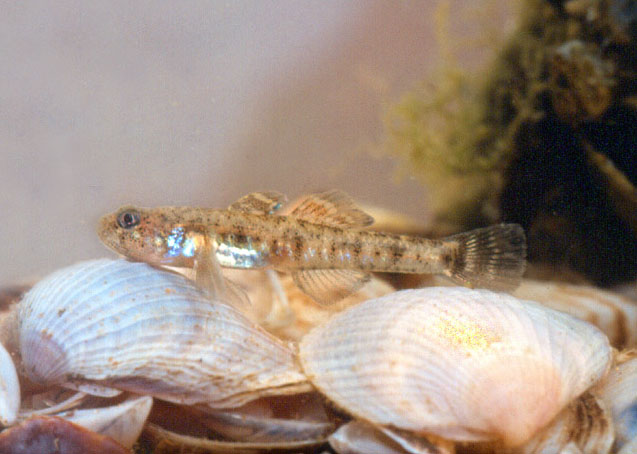| Gobiidae (Gobies), subfamily: Gobiinae |
| 5 cm TL (male/unsexed) |
|
demersal; depth range 0 - 2 m, amphidromous |
| Eurasia: along the coasts of Black, Azov, Caspian and Aegean seas west to Aliakmon drainage (Greece). Identity of the population along the eastern shore of Adriatic is questionable. Introduced in the Aral Sea and is now extirpated. |
|
Dorsal spines (total): 7-7; Dorsal soft rays (total): 7-8; Anal spines: 1-1; Anal soft rays: 7-9; Vertebrae: 31-32. Anterior oculoscapular, preopercular, and sometimes posterior oculoscapular, canals present; body squamation complete on caudal peduncle and along at least lateral midline to axil. Males with 4-5 major vertical bars. |
| Inhabit fresh to hyper-saline waters (to 55 ppt) of lakes, estuaries and lagoons, in shallow areas with much weed. Feed on small crustaceans and chironomid larvae (Ref.12215); larvae of the mussel Dreissena polymorpha (Ref. 59043). Lives less than 2 years. Spawns after first winter. Eggs are attached to the roof of a cavity under stones, plant material or shells and are defended by male. Postlarvae are pelagic. (Ref.59043). |
|
(Ref. 96402)
|
| harmless |
|
Source and more info: www.fishbase.org. For personal, classroom, and other internal use only. Not for publication.
Page created by Jen, 05.08.02,
php script by kbanasihan 06/09/2010 ,
last modified by
dsantos, 20/08/10

